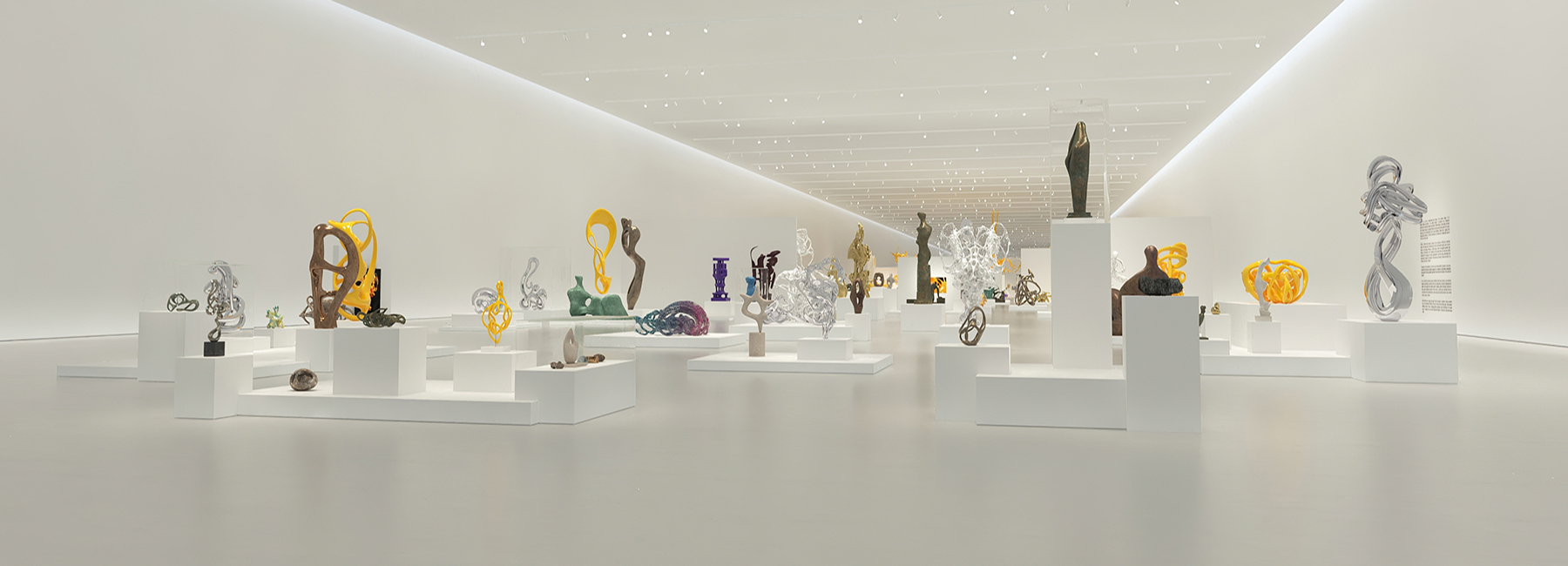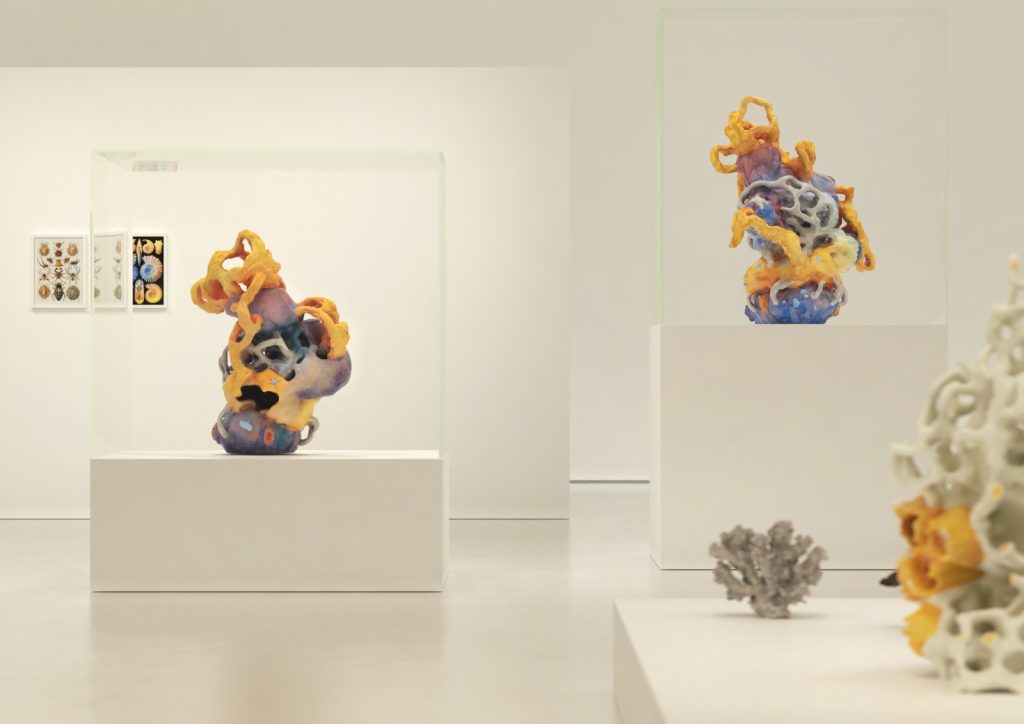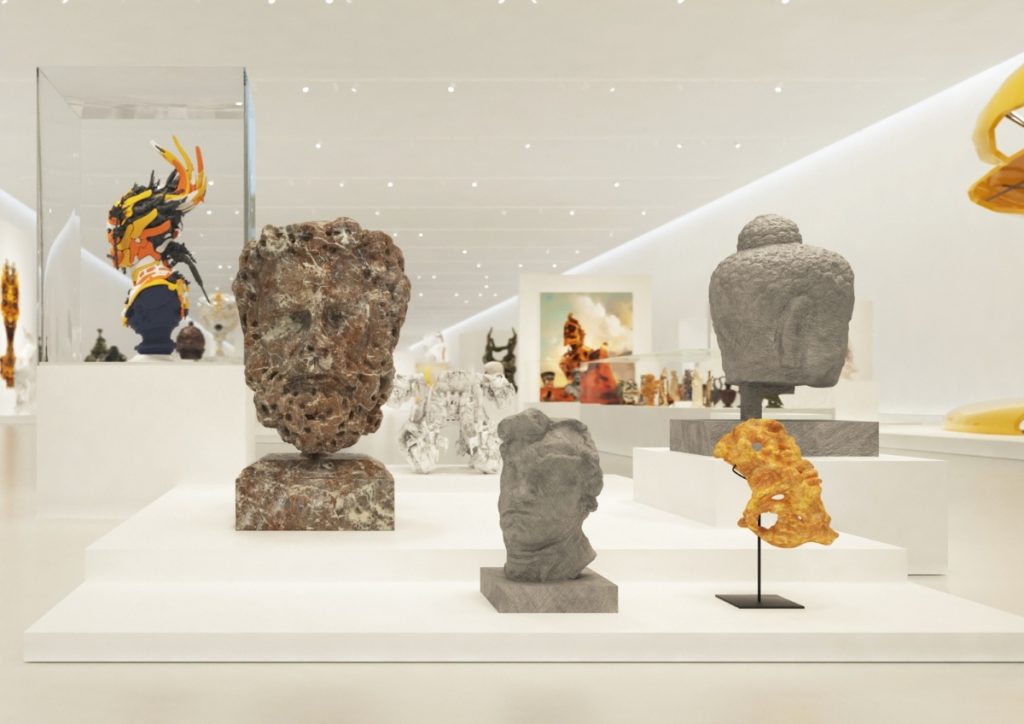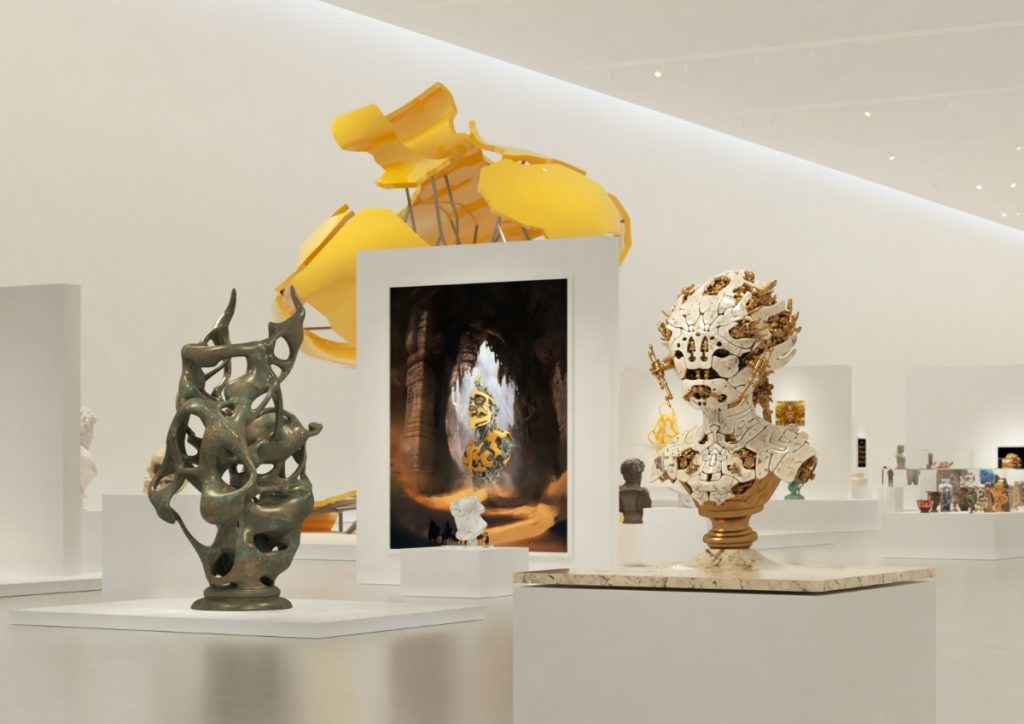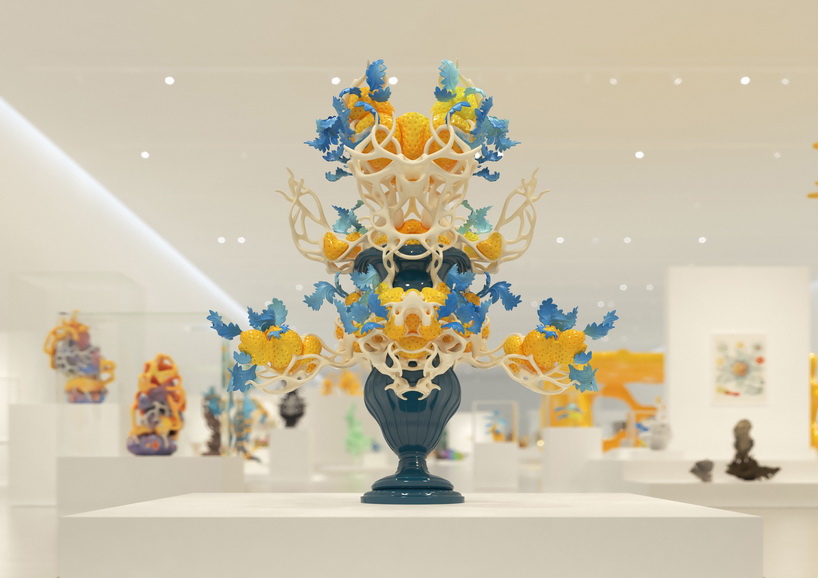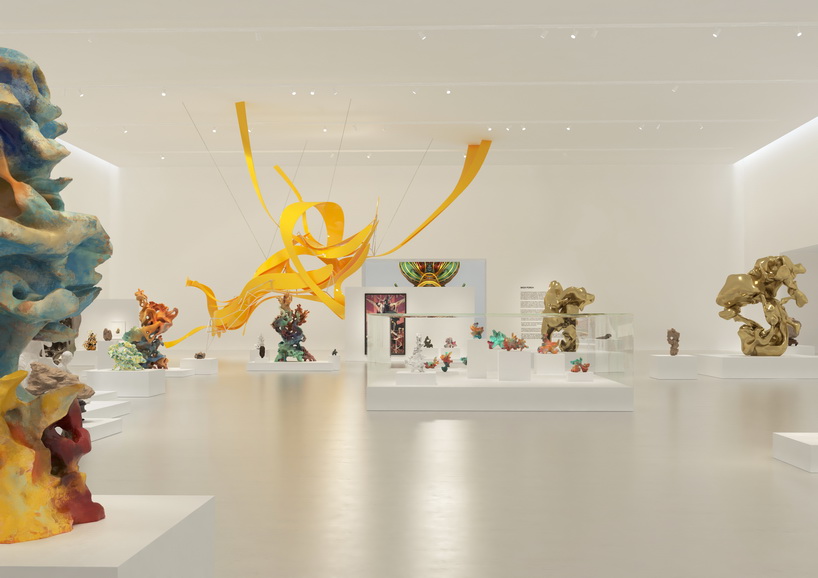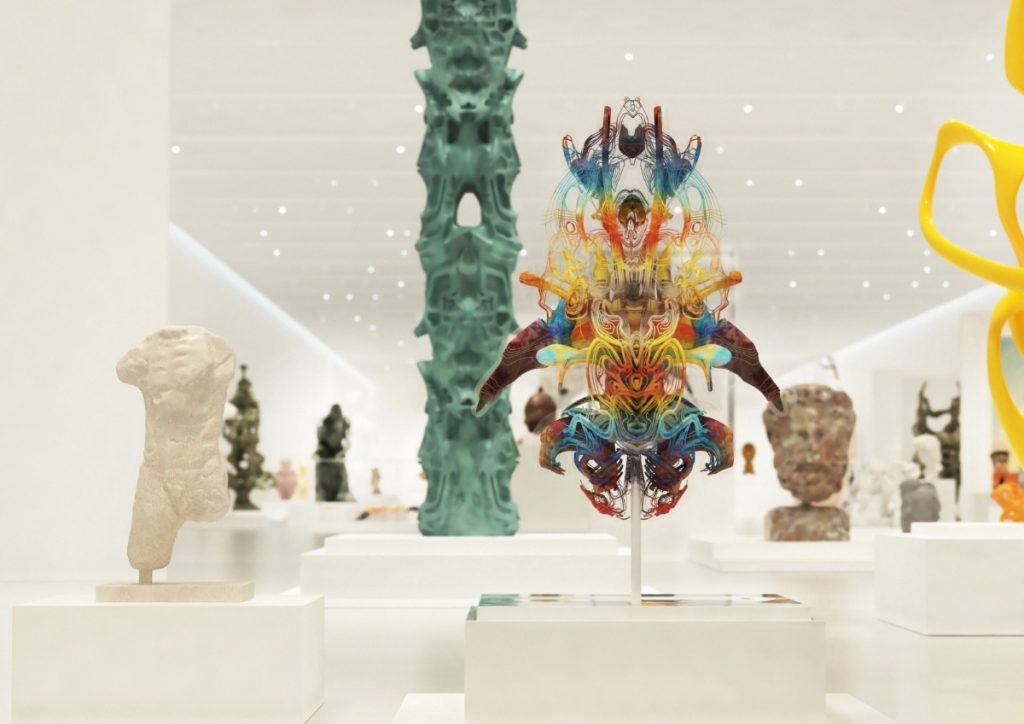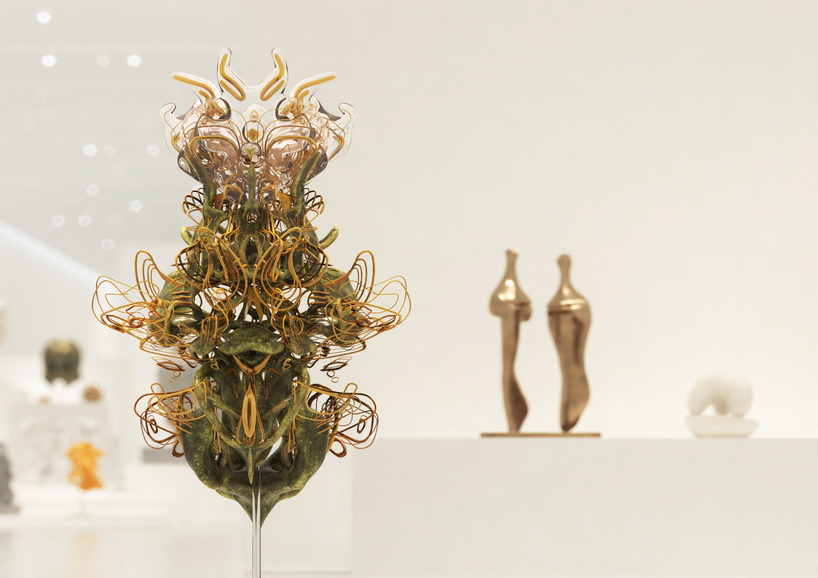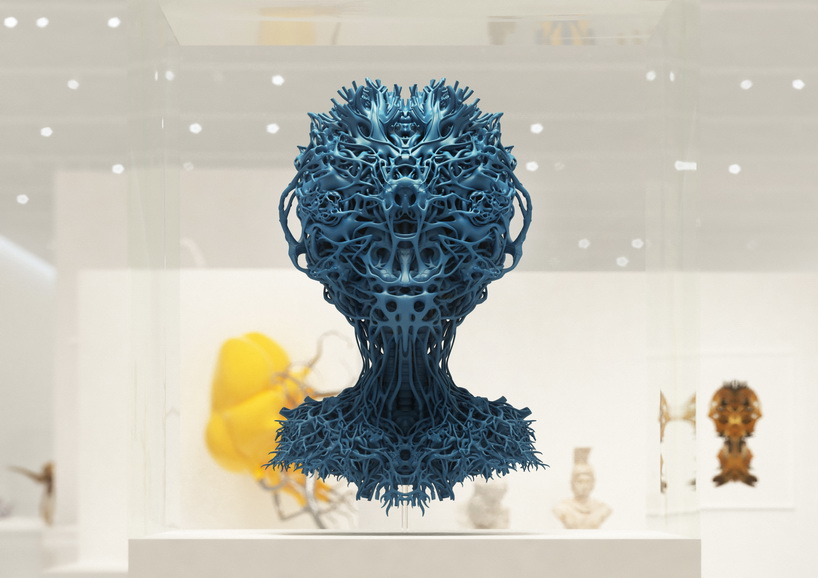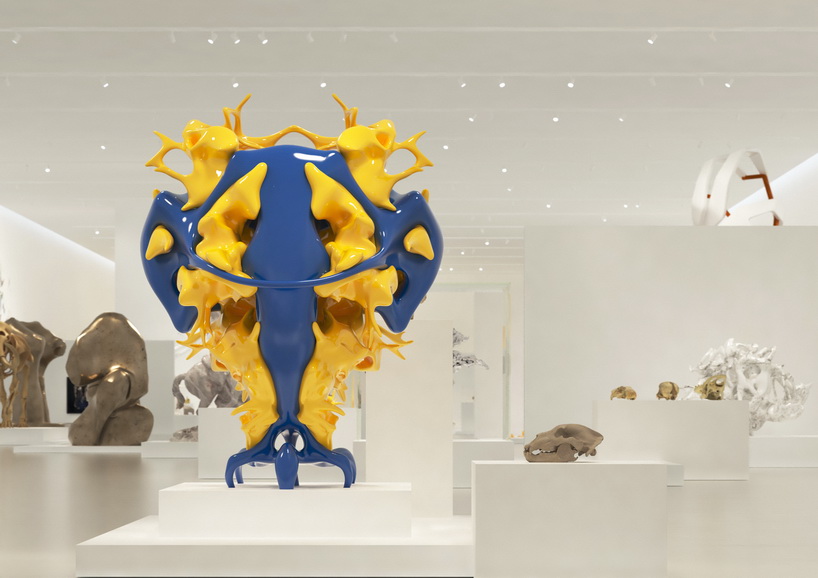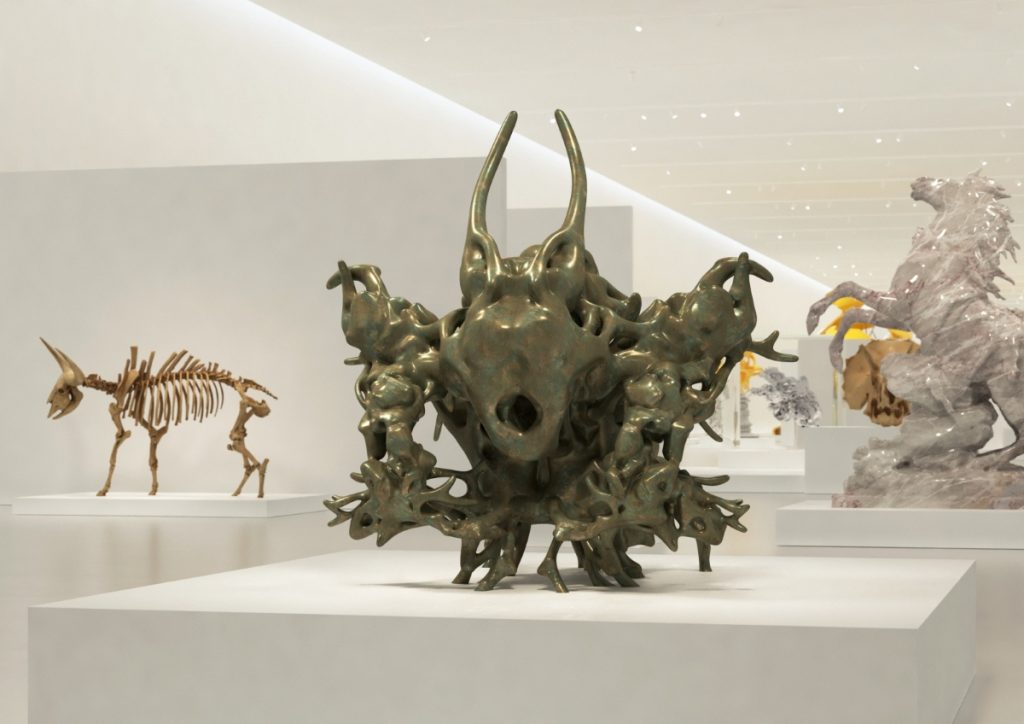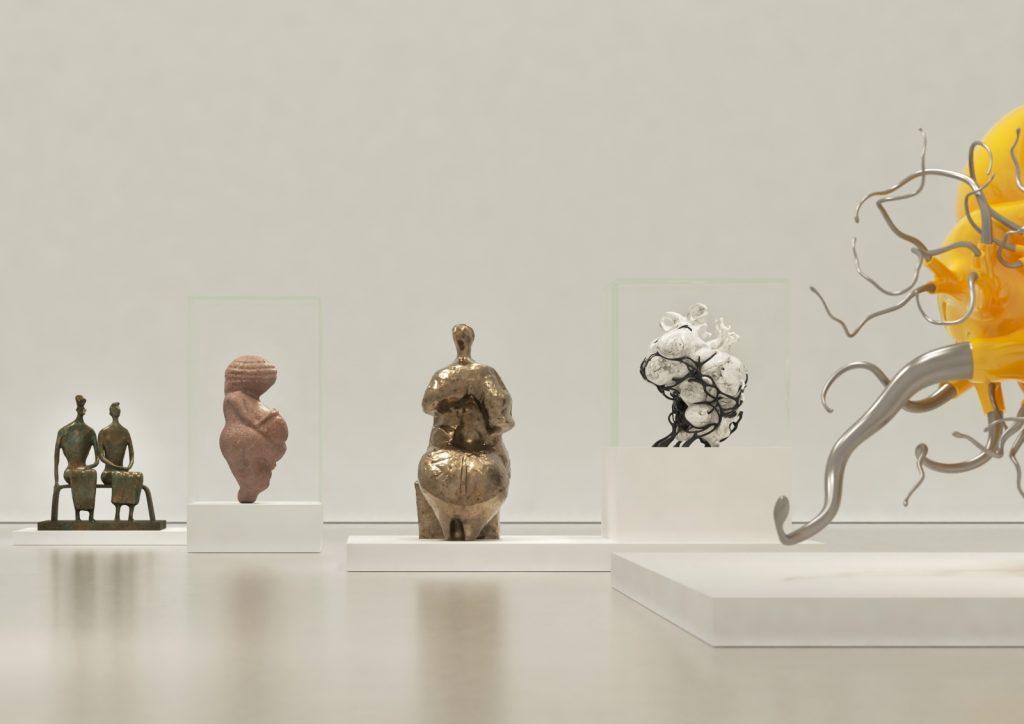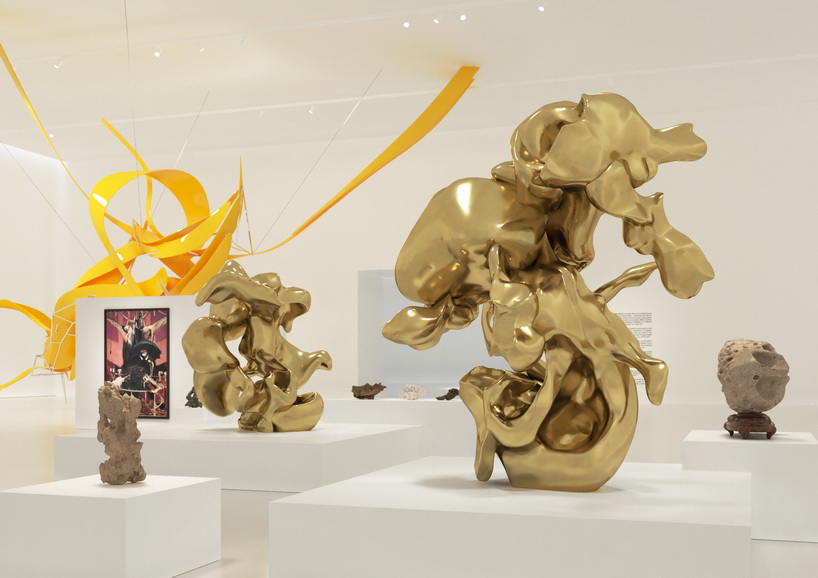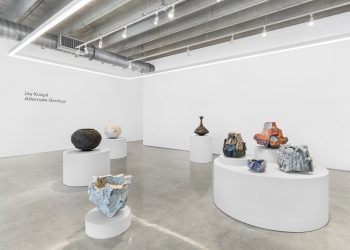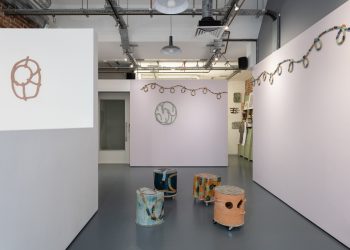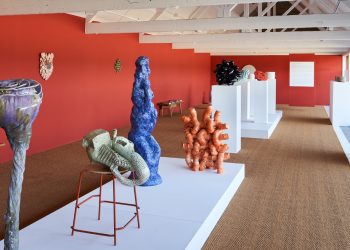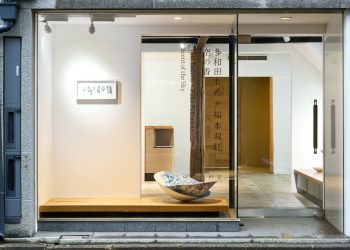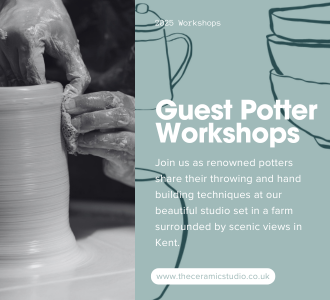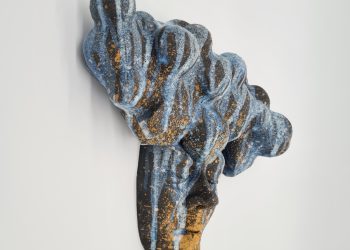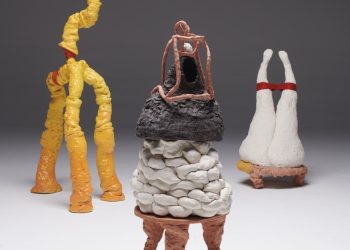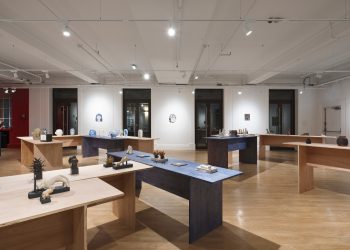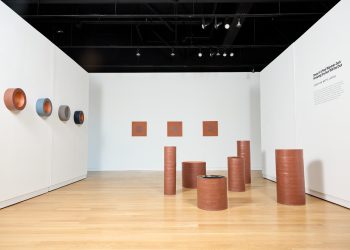MUSEION / ΜΟΥΣΕΙΟ, curated by the imagination of Nick Ervinck
Online exhibition
In this new kind of MUSEION, a place where the nine Muses give inspiration free rein, I enter into a dialogue with traditional forms of art and architecture. Daughters of Mnemosyne, these Muses preserved ancient wisdom and knowledge, animating these precious gifts again and again, creating new forms for them, designing new world views.
As in ancient times, this MUSEION displays a unique combination of art and science. Just as the ‘Temple of the Muses’ in Alexandria with its famous Library sought to understand the entire world at that time, my virtual MUSEION brings together a collection of artworks that ask intriguing questions to our recent history.
Nick Ervinck in dialogue with Henry Moore, Barbara Hepworth, Hans Arp, Lyn Chadwick, Bernard Meadows, Francis Bacon, Auguste Rodin, Antoine Bourdelle, Michelangelo Buonarroti, Ernst Haeckel, H.R. Giger, Tony Cragg, Richard Deacon, Joep van Lieshout and Franz West.
Historical pieces from, among others, The Louvre – Paris, The Metropolitan Museum of Art – New York, The British Museum – London, Middelheim – Antwerpen, Hirshhorn Museum and Sculpture Garden – Washington D.C., Museo Nazionale Romano – Roma, Statens Museum for Kunst – Copenhagen, Das Naturhistorisches Museum – Wien.
Enhanced with African masks, rocks, shelves, bones, corals, fruit, toys and tree trunks.
In the late 1980s, profound changes took place in many artistic fields. Belgium was praised all over the world for its new theater and dance culture, the plastic arts received incredible recognition and multi media arts festivals were top of the bill. Museums also shared in these greatly changed experiences and artists, curators and directors alike abandoned old school methods when setting up exhibitions. Following the global crisis that caused COVID 19 as a pandemic and the associated closures of muse ums, traditional ideals have shifted, such as the uniqueness of the artwork and the universal recogni tion of aesthetic value in itself.
Amid many other initiatives, space is now also being created for “a museum without walls”, a virtual meeting place for the general public through bringing new interactive methods into contact with mu seum and aesthetic objects. In this sense, the artist himself is given more and more space to make creative interventions in various cultural settings, sometimes as an artist-in-residence, sometimes as the creator of a virtual exhibition, often also as a contemporary demiurge who links the history of arts centers with the artistic slopes that he himself likes to walk and develop into a renewed concept of a MUSEION. The latter concept, which stems from the Renaissance, an era that, like ours, was bubbling with renewed ideas, also allows spectators to learn to look anew, to find the time and tranquility to master the museum in its various layers and facets.
Prof Freddy Decreus, 2020
I am a person whose life revolves around the creative and innovative use of computers and games. I have used my knowledge of the digital world to breathe new life into sculpture and to connect it with architecture in a different way. Today my sculptures are physically elaborated, but always arise from a digital way of thinking. So with this research project I am going back to my digital world to rethink the relationship between sculpture, nature and history in virtual spaces.
I am deeply aware that space is an experience that relies on great cultural and historical differences. In the processing of what passes as “reality”, I know that “reality” is always a product of imagination and experience, of ways of looking and investigating. My virtual unlocking of “reality” is therefore a very personal, but also extremely creative way of dealing with the things around me.
Because I experience this world as disenchanted and then again often as extremely enchanting, the museum has always fascinated me and intrigued me immensely as a central place of cultural attrac tion and wonder. A museum therefore always appears to me as a magical place that carries with it a whole epistemological legacy and has always managed to legitimize culture in changing contexts.
Since I have felt particularly fascinated by Henry Moore and Barbara Hepworth in recent years, I also want to involve them strongly in my artistic dialogue. In collaboration with the Henry Moore Founda tion, I have set up an intense collaboration that has led to my monograph on both our works (NHIECNKREYRMVOIONRCEK Hannibal Publishers, 2019). In addition to this artistic godfather of mine, I also want to include many images of other artist and influences in my MUSEION.
Just as I already built my NHIECNKREYRMVOIONRCEK cabinet GNI-RI Oct2019 in Waregem around a collection of 300 art books and monographs relating to Henry Moore and his time and as I varied them with objects that inspired both him and me for a lifetime, I see my MUSEION as a clergy man space in which people can undergo an inspiring feeling of intoxication by stepping into the imagi nation that has kept me artistically afloat all the past years.
I have always liked to play cross-over between disciplines of visual arts, new media, architecture, de sign, dance, furniture, books, African art, minerals, geology, archeology, toys and that is why I also feel related to the ideals of Bauhaus where there was no distinction between the disciplines. Also in my MUSEION everything fertilizes each other and my manual drawings can connect all the arts rhizomati cally. An audiovisual support per object can allow the exploration of this virtual space to take place in teractively as if it were a game or game module.
By entering into a personal and energetic connection as an artist, I want to explore a new way of look ing, so that sculpture and architecture will be seen in a changing light and will hopefully encourage many people to take the same creative journey. What was once at the center of attention as a life-en lightening moment and now stored somewhere in cellars or archives is far from being served and if the current pandemic has taught us anything, it certainly has to do with our need to understand, to interact with each other. listen and understand life.
So learn to look “Through the looking glass” and again imagine yourself as “Alice in Wonderland”, being overcome by other dimensions of looking and feeling, straight through the holes in things, as Moore, Hepworth and I love to do! So for me it is about touching people, renewing our view and being carried away by all the cross connections that make human life a unique experience.
Nick Ervinck
MUSEION / ΜΟΥΣΕΙΟ is available here.
Nick Ervinck is a Belgian artist who graduated in 2003 from the KASK (Royal Academy of Fine Arts, Ghent) with a master’s degree in Mixed Media. He trained in computer modeling, sculpting and working with materials such as polyester, plaster and wood, and after teaching at art academies in Tielt, Menen and Kortrijk (2004-2012), he returned to the KASK to spend three years as a visiting professor here. His work consists of large installations, handmade and 3D printed sculptures, ceramics, prints, drawings, light boxes and animated films.
Images courtesy Nick Ervinck


